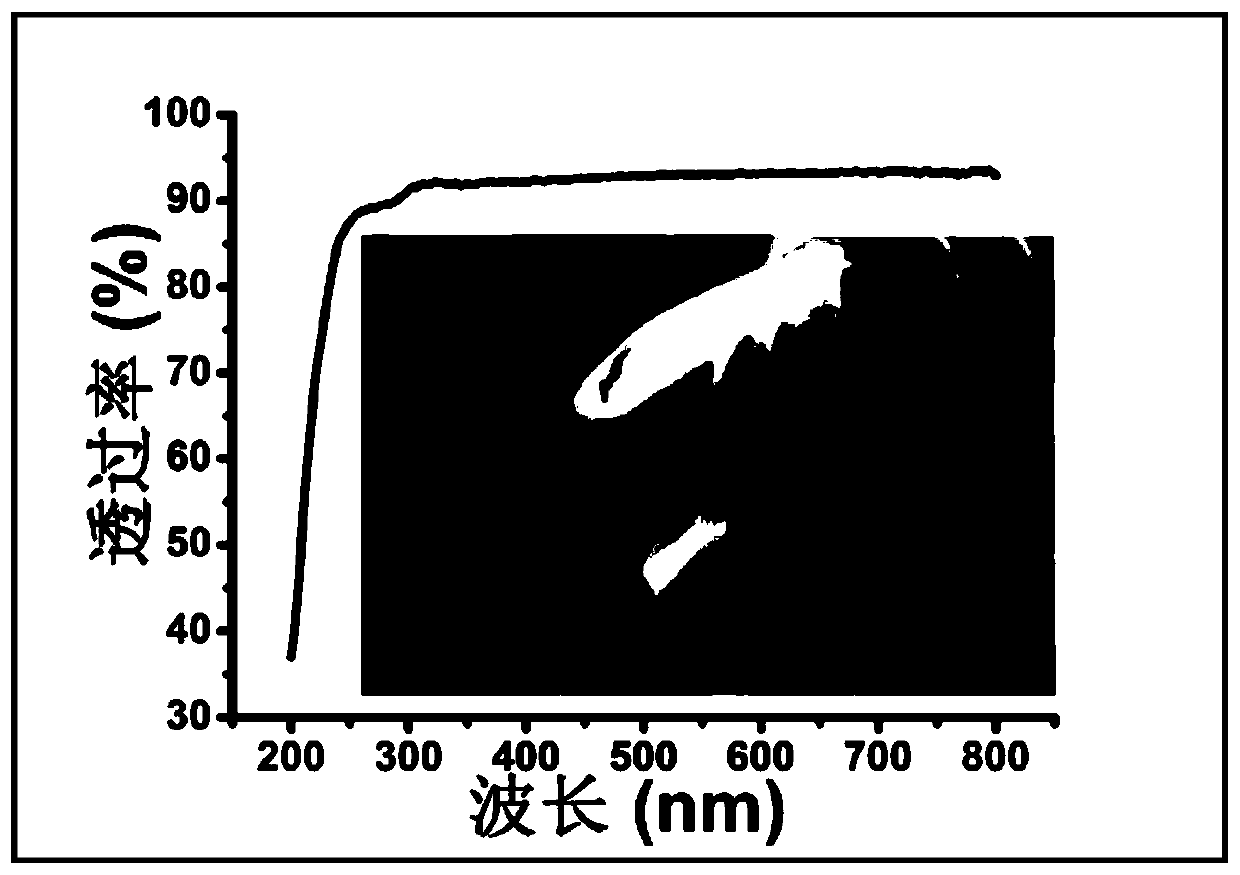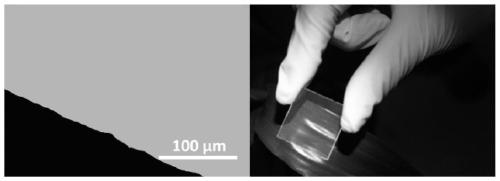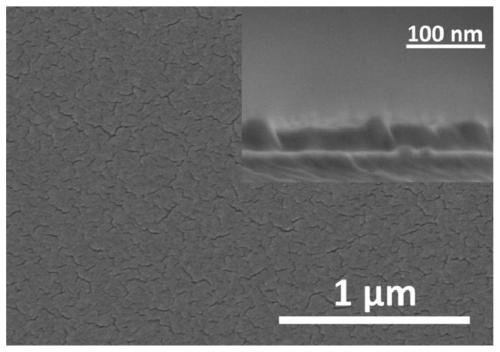Aggregation-induced luminescent ultrathin lysozyme fluorescent nanofilm and its anti-counterfeiting application
An aggregation-induced luminescence and fluorescent nanotechnology, applied in the field of aggregation-induced luminescence ultra-thin lysozyme fluorescent nano-films, can solve the problems of coating stability, complex manufacturing process, biological safety, etc., and achieve easy operation, simple operation, low cost effect
- Summary
- Abstract
- Description
- Claims
- Application Information
AI Technical Summary
Problems solved by technology
Method used
Image
Examples
Embodiment 1
[0026] Mix 100 μL 2 mg / mL lysozyme aqueous solution and 20 μL 0.1 mg / mL 9,10-distyryl anthracene aqueous solution, and record it as liquid A; adjust 50 mmol / L tris(2-carboxyethyl)phosphine aqueous solution with NaOH to The pH value is 7.0, which is recorded as solution B; mix 100μLA solution and 100μL B solution evenly, float a transparent glass piece on the surface of the resulting mixture, and incubate at room temperature for 30 minutes, forming a layer of aggregation-induced luminescent ultra-thin lysate on the transparent glass surface Enzyme fluorescent nanofilms.
[0027] The light transmittance of the fluorescent nanofilm was characterized ( figure 1 ), fluorescence and optical characterization ( figure 2 ), plan and cross-sectional characterization of scanning electron microscopy ( image 3 ), morphology characterization by atomic force microscopy ( Figure 4 ), and use 340W xenon lamp irradiation for 30 minutes to detect its photobleaching resistance ( Figure 5 ...
Embodiment 2
[0031] Application of Aggregation-Induced Luminescent Ultrathin Lysozyme Fluorescent Nanofilm as Anti-counterfeiting Coating
[0032] Mix 100 μL of 2 mg / mL lysozyme aqueous solution and 20 μL of 0.1 mg / mL 9,10-distyryl anthracene (DSAI) aqueous solution, and record it as liquid A; Adjust the pH value to 7.0 with NaOH, and record it as solution B; mix 100μLA solution and 100μL B solution evenly, and immerse substrates such as silicon wafers, glass wafers, gold wafers, conductive glass, polyester, polycarbonate, and plexiglass in the obtained The mixed solution is incubated at room temperature for 30 minutes to form a layer of aggregation-induced luminescent ultrathin lysozyme fluorescent nano film on the surface of the substrate. The contact angle test was carried out on the surface of the substrate before and after treatment, and the results are shown in Figure 8 . The results show that the fluorescent nano film can be adhered to various substrate surfaces.
[0033] Furthe...
PUM
 Login to View More
Login to View More Abstract
Description
Claims
Application Information
 Login to View More
Login to View More - R&D
- Intellectual Property
- Life Sciences
- Materials
- Tech Scout
- Unparalleled Data Quality
- Higher Quality Content
- 60% Fewer Hallucinations
Browse by: Latest US Patents, China's latest patents, Technical Efficacy Thesaurus, Application Domain, Technology Topic, Popular Technical Reports.
© 2025 PatSnap. All rights reserved.Legal|Privacy policy|Modern Slavery Act Transparency Statement|Sitemap|About US| Contact US: help@patsnap.com



